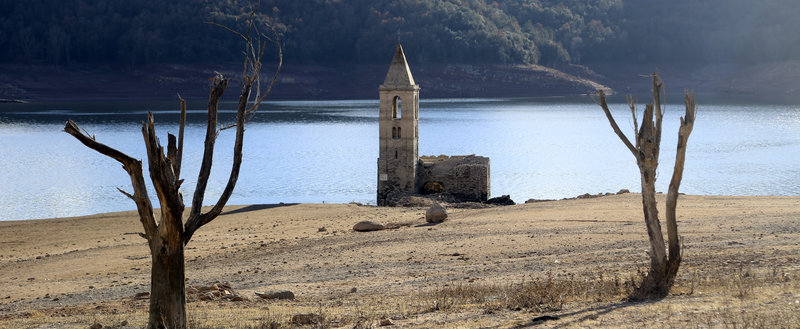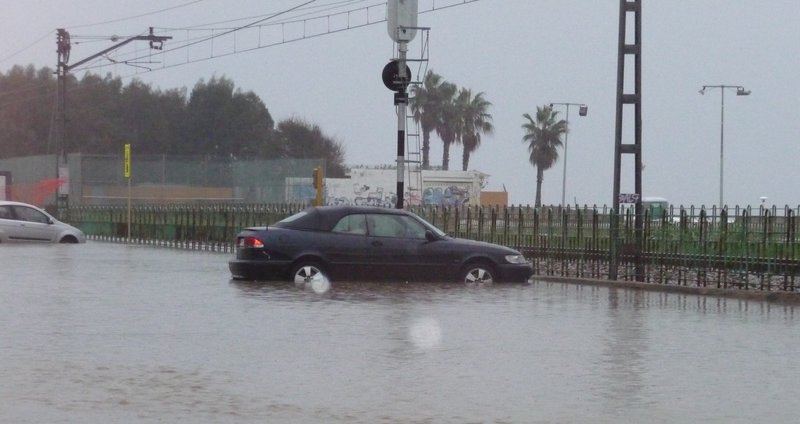The Catalan coast in retreat
The UN says sea levels will rise up to a metre by 2100, causing Catalonia’s beaches to recede and provoking more frequent flooding of the coastline. The government says it is already preparing measures to tackle the problem
By 2100, sea levels will have risen by almost a metre compared to the end of the 20th century, if emissions of CO2 and other greenhouse gases continue at the same pace. This is a forecast in the report by the IPCC (the UN’s Intergovernmental Panel on Climate Change) that was published at the end of September, warning about the effects that climate change will have on the sea. Another report, from the Climate Central organisation, is even more pessimistic, claiming that the expected rise in sea levels could force up to 300 million people around the world from their homes. In Catalonia, this rise in sea levels will cause the coasts to recede and produce frequent flooding affecting above all urbanised areas of the coast.
The head of the Maritime Engineering Laboratory (LIM) of the Universitat Politècnica de Catalunya, Agustín Sánchez-Arcilla, says that rising temperatures will cause sea levels to rise because “the heat will melt the Earth’s ice mass – such as glaciers – which will raise the volume of water in the oceans.” This rise in sea levels will increasingly encroach on our beaches and put deltas at risk. At the same time, “storms produced out at sea will increase, but the higher sea level will mean that by 2100 storms will cause much more erosion of the beaches and much more flooding of coastal areas,” says Sánchez-Arcilla, who estimates that widespread flooding that so far happens every 70 years or so will take place every five years, and this will go along with continuous lighter flooding.
Yet, it must be remembered that the data are projections, and can vary. The least favourable scenario predicts a rise in sea levels of over a metre by 2100, while the most optimistic forecasts predict a rise of 40cm. “Right now, the main source of uncertainty is the Antarctic, because we don’t know how its ice mass will affect the planet’s oceans, which is very important,” says Sánchez-Arcilla. However, the most decisive variable related to the rise in sea levels will be political agreements between states to reduce greenhouse gas emissions, which is another thing that cannot be forecast. Nevertheless, the LIM warns that even if emissions were stabilised today, sea levels would still continue to rise due to the thermic inertia built up over a couple of centuries. “This is the gift we will leave to the next generation,” says Sánchez-Arcilla.
More erosion and flooding
The head of the laboratory warns that the most vulnerable areas are the low-lying coastal zones, such as deltas and wetlands, as well as the urbanised stretches of coast. The former because “as they are so low, they don’t get enough earth sediments and so will suffer more erosion and flooding,” and the latter because “the artificial elements prevent them from developing their natural capacity for self-defence.” Such is the case of the beaches of Barcelona and the Maresme coast, which “have lost their natural dynamic,” he says. These artificial beaches and coasts, he warns, will need constant maintenance, which will increase with the effects of climate change and incur rising costs.
In the Delta de l’Ebre, the rise in sea levels is complicated by the problem of a lack of sedimentation. The sand and mud that are carried to the mouth of the river to accumulate in the delta are being retained by excess water along the Ebre river basin, causing the delta to sink. Also, the fact that most of the Delta is just under a metre lower than sea level means the consequences could be disastrous, even for some of the nearby towns.
The rise in temperatures across the planet causing sea levels to rise will also cause the water temperature to go up, changing marine ecosystems and causing changes in the food chain, especially in protected areas, such as bays or coastal lagoons. Sánchez-Arcilla insists that what is needed is a broad approach: “When we talk about a plan to protect the coasts, we think about the beaches, but we should also think about activities like fishing and aquafarming, and the ports.”
Sánchez-Arcilla says that the countries that will come off best will be those that are flat, such as the Netherlands, which have already foreseen a rise in sea levels of up to two metres. However, for those countries with fewer resources, “that will not be achievable without international aid,” he says.
Sources in the Catalan government’s territory and sustainability department say they are working on tackling the effects of a rise in seal levels on the Catalan coastline. They hint at palliative measures to regenerate beaches damaged by storms and flooding, which will be especially needed in the central areas of the Catalan coast, which is most at risk and where most damage is caused today. An example is the Maresme area, where bad weather causes increasing damage to the rail system. However, these types of measures do not seem sustainable in the long term and the department says “their economic sustainability will have to be evaluated.”
In the long term
Concerning long-term measures to prevent water levels rising above dykes and breakwaters, preliminary work has been carried out in some ports, such as those in Blanes and Estartit, and similar work is in the pipeline elsewhere. Yet, these measures are also problematic, as artificial barriers like breakwaters cause alterations in the accumulation of sediment, making some beaches grow and others shrink. The department insists that “the coast has to be understood as a transition zone between the land and the sea, and therefore subject to change; with any rigid measures making it difficult to maintain in the mid to long term.” That is why measures to make the coast more flexible are required, such as taking away rigid elements that prevent beaches from developing in a natural manner.
Mercè Rius, the head of the government’s Qualitat Ambiental i Canvi Climàtic agency, insists on the importance of understanding how these phenomena will affect Catalonia in order to intervene from all sectors. Rius says the government’s plan for adapting to the changes is being updated, and says it will be ready in the first quarter of this year, and will include climate forecasts for Catalonia until 2050, as well as determining which areas are the most vulnerable.
According to Rius, “the information will be communicated via different departments, which will then take the corresponding action,” and she adds that it is also important to work on reducing emissions through tax incentives and by fostering the use of renewable energy. Yet, she also warns that these preventive measures may not be enough: “Catalonia’s emissions make up 1% of all those in Europe. We depend on what others do. We not only have to act by mitigating the effects, but also by adapting to them,” says Rius. The agency head also points out that some sectors, such as tourism and agriculture, will have to rethink their strategies in order to adapt to the new climatic situation, and she gives the example of moving vineyards to higher altitude areas to avoid grape production being negatively affected by the expected rise in temperature.
feature




